Irpiciporus pachyodon
Scientific name: Irpiciporus pachyodon (Pers.) Kotl. &
Pouzar
Derivation of name: Pachyodon means "with thick teeth."
Synonyms: Spongipellis pachyodon (Per.) Kotl. &
Pouzar; Hydnum pachyodon Pers.; Irpex mollis Berk
& M.A. Curtis; Sarcodontia pachyodon (Pers.) Spirin
Common name(s): Spongy toothed polypore, marshmallow
polypore.
Phylum: Basidiomycota
Order: Polyporales
Family: Polyporaceae
Occurrence on wood substrate: Parasitic and saprobic;
effused-reflexed, spreading, single or overlapping caps on
fallen logs and living hardwoods, particularly oak; from July
through October, overwinters.
Dimensions: Individual caps 2.5 to 5 cm wide and long with
individual caps and effused portions fusing to form larger
sheets 20 cm or more wide. Context up to 1 cm thick.
Description: Stalkless caps are white to ochraceous; finely
tomentose to glabrous; white to ochre tubes initially poroid
but eroding to form flattened and cylindrical teeth 0.5 to 1.5
cm in lengh; teeth often decurrent onto effused portions.
Comments: As reflected in the order name, Polyporales,
Irpiciporus pachyodon is actually a poroid fungus. In my
website, it keys out under
Teeth and Spine fungi due to the
prominent
"teeth." Several other poroid fungi (see
Poroid Group A key) have pores which break down to
form teeth. This parasite causes a white heart-rot of living
broadleafed trees, particularly oak.
More Information at MushroomExpert.com
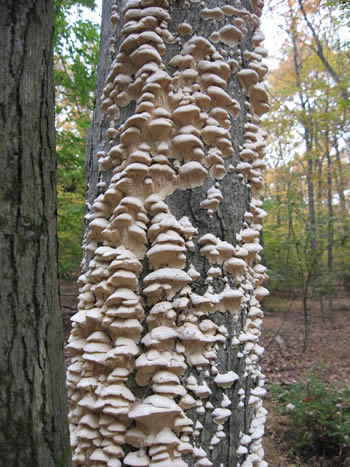
Figure 1. Irpiciporus pachyodon in the field.
Photo © Mike Romankiewicz.
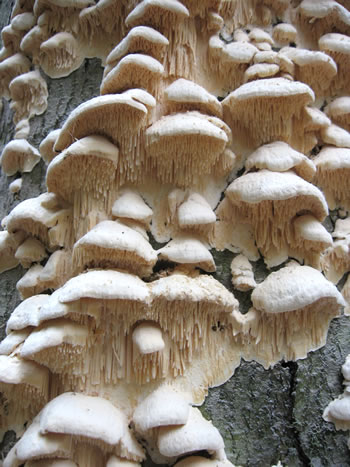
Figure 2.
Individual caps and effused portions of
Irpiciporus pachyodon may fuse together to form large
sheetlike fruit bodies. Photo © Mike Romankiewicz.
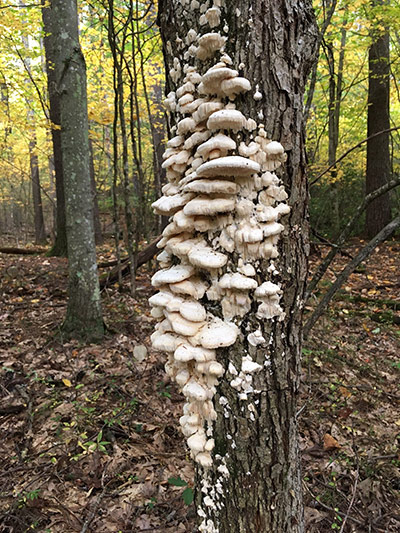
Figure
3. Spongy toothed polypore parasitizing a white oak
tree (Quercus alba) in
New Hampshire.
Photo © Gary Emberger.
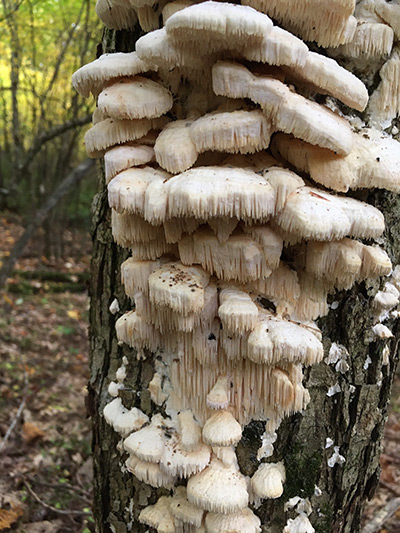
Figure 4.
The many teeth of Irpiciporus pachyodon resemble
stalactites found in caves.
Photo © Gary Emberger.
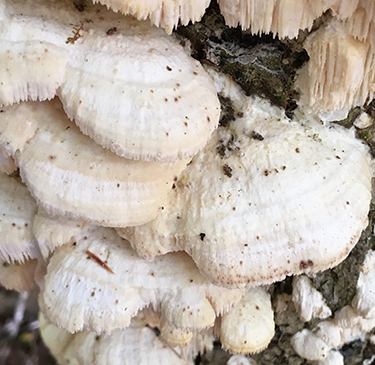
Figure 5. Azonate caps of
Irpiciporus pachyodon.
Photo © Gary Emberger.
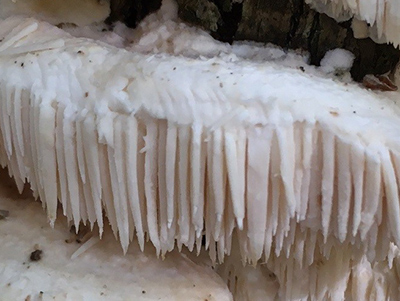
Figure 6. The white flesh of the cap is evident in this
sectioned specimen. Photo © Gary Emberger.
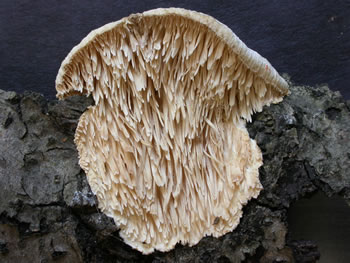
Figure 7. Effused-reflexed fruit body of Irpiciporus
pachyodon. The teeth are decurrent onto the effused
portion of the fruit body. Photo is of a dried herbarium
specimen.
Photo © Gary Emberger.
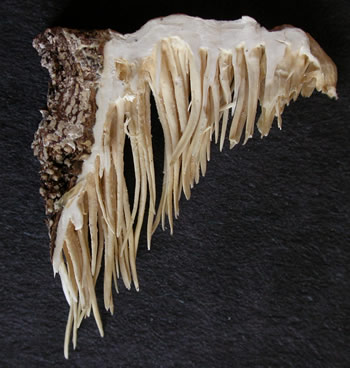
Figure 8. The
teeth of Irpiciporus pachyodon are
flattened and may be quite long, up
to 1.5 cm
in length.
Photo is of the specimen in Figure 7, sectioned.
Photo © Gary Emberger.